
Our History
Since its establishment in 1919, the University of Minnesota's Carlson School of Management has been a leader in business education. By embracing innovative teaching methods, cultivating world-class faculty, and promoting cutting-edge research, the school has served as a beacon of knowledge for the world's business community for generations.
As history has unspooled, the Carlson School has had its share of highlights and milestones.
Explore our history
We find our footing as a fledgling business school
-
George Dowrie (pictured), a banking expert from Michigan, is named the business school's first dean.
-
The Commerce Club is organized.
Fewer than 100 applicants meet the school's rigorous standards, producing a small but tight-knit community of faculty and students.

Our community begins to take shape
-
University of Minnesota Business School is accredited by the American Assembly of Collegiate Business Schools.
The school was one of the very first institutions accredited by this organization, known today as the Association to Advance Collegiate Schools of Business (AACSB).
-
The business school graduates its first 14 students.
-
A Business School Alumni Association was organized.
-
The University's chapter of Beta Gamma Sigma, an honorary business fraternity, was organized.
-
The Alpha Epsilon Chapter of Delta Sigma Pi was formed on the campus as a coed professional business fraternity. It remains an active and thriving part of the Carlson School of Management to this day.
-
The Accounting program is established. While completing their degrees, students in the program are able to work in the offices of Twin Cities firms and meet the needs of their community.
-
Russell Stevenson (pictured), a protégé of George Dowrie, is named dean. Under Stevenson's leadership, the school adds courses in finance, insurance, transportation, marketing and business law.
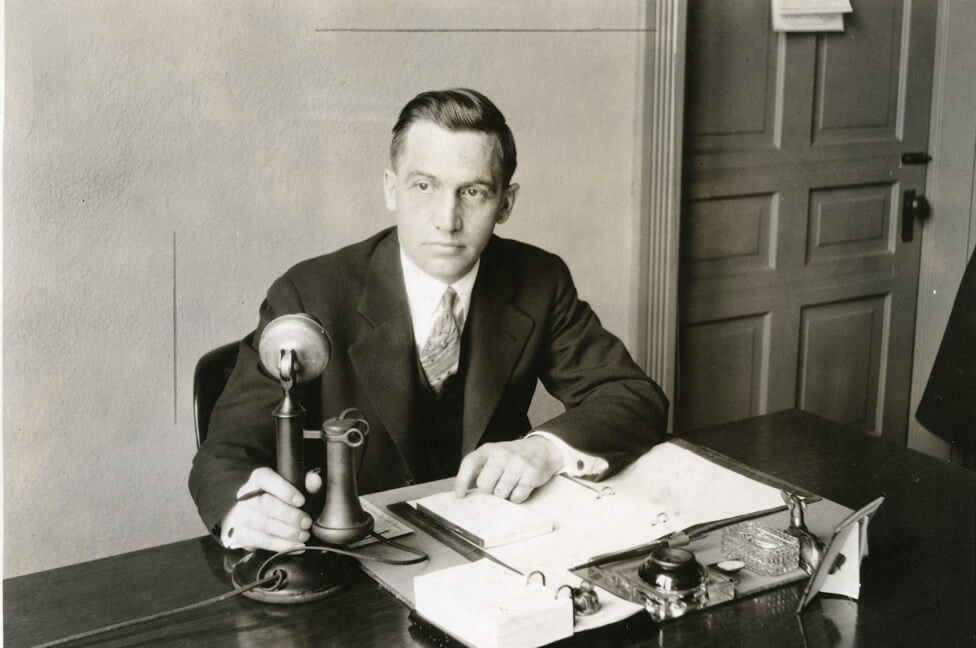
-
The school's name is changed to the School of Business Administration.
By this time, the school has produced notable graduates such as:
- S. Clark Belse, '23 BSB, future Bank of America president and champion of computerization and automation in financial services.
- Sidney Swensrud '23 BSB, who went into the oil business and became the president of Gulf Oil.
- Bryan Smith, '23 BSB, who joined Liberty Mutual Insurance Co. in 1927 and retired as its chairman in 1955.
We rise to meet new challenge
-
The Business Women's Club is founded to bring together women interested in business.
The club gives the school's female students an opportunity to consider job prospects and discuss women's issues in the workplace. Club members regularly meet for lunch in the basement of the school's Vincent Hall.
-
The Associated Students, a student government group of the school's undergraduate program, is founded.
Today, this group is known as the Business Board (a.k.a., the B-Board), with members serving on committees and planning activities to connect students with faculty.
-
The school begins granting an MBA degree.
-
The school moves into the new Vincent Hall on the University of Minnesota's mall, giving students a single, permanent location for the first time.
The move takes place after students pressure the school and the state to provide them with better, bigger facilities, alongside a Minnesota Daily exposé detailing the school's "slum conditions."
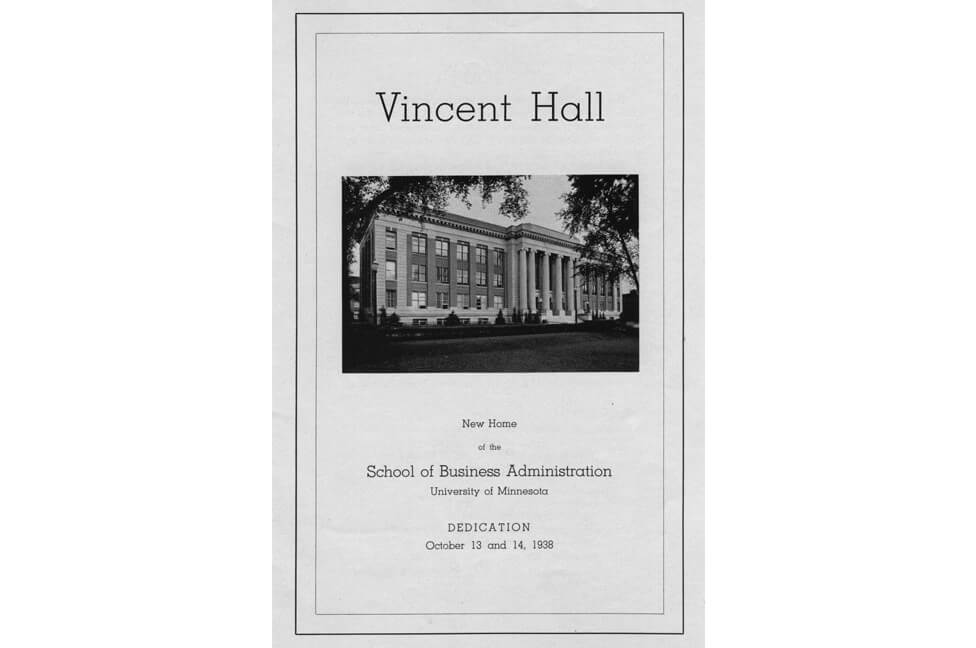
We greet a new era of national prosperity
-
Enrollment reaches 686 (581 men, 105 women).
-
Longtime faculty member Helen Canoyer becomes the first woman to earn her PhD at the school and was among the first women to get a doctoral degree in economics in the country.
-
Economist Arthur Marget, one of the brightest academic stars of the graduate school, stops teaching after enlisting in the army. He would ultimately serve on the Board of Governors of the Federal Reserve as its Director of International Finance.
-
The first Business School Day is held to showcase student research and activities and celebrate the school's post-Depression stability.
-
Short (three-quarter) courses are launched for women in supervisory and administrative work to support the war industry
- Annual alumni event is introduced.
- Richard Kozelka, a long-time professor, is named dean.
- Enrollment drops to 153 at the height of World War II (63 men, 90 women).
-
The Industrial Relations Center (IRC) is founded by faculty members Dale Yoder and Herbert Heneman, responding to the nation's growing interest in workforce training and development.
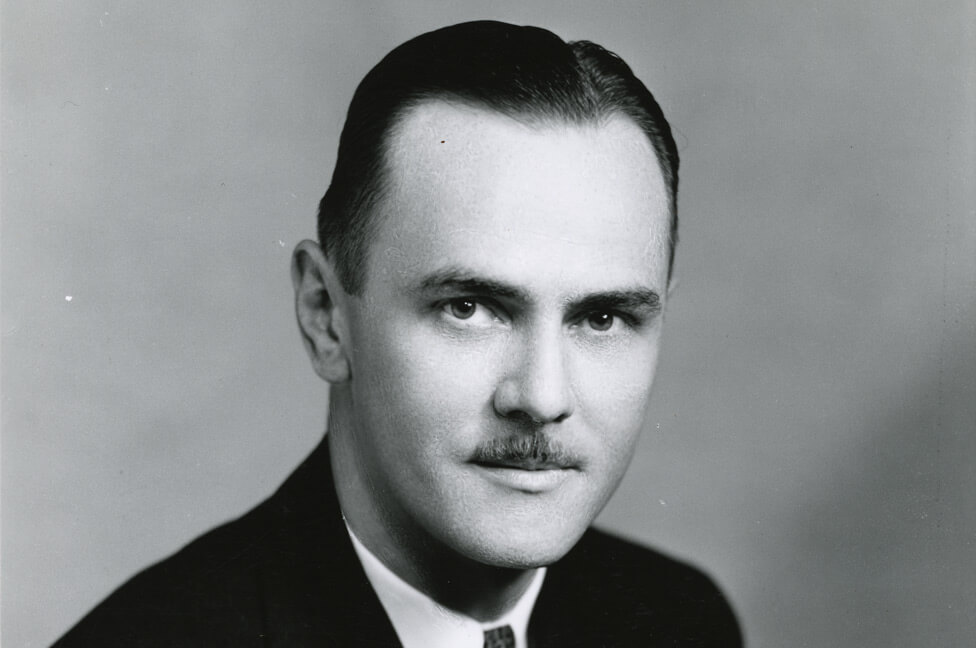
-
Post–World War II enrollment swells to 1,741 (1,649 men, 92 women).
-
The school begins offering a PhD in Business Administration, recognizing the scholarly work required to understand the economy and business community.
By the end of the 1940s, the business school was prepared to help Minnesota through a new period of growth and prosperity.
We grow to keep pace with a post-war economy
-
IRC launches Workers' Education program, including an enormously popular series of courses in union leadership and an information-sharing event with management and labor workers.
-
IRC establishes master's degree program.
-
E. Jerome McCarthy earns his MBA with a focus in marketing and would go on to get his PhD in 1958. His dissertation served as the basis for his 1960 book, Basic Marketing: A Managerial Approach—it's now considered a classic in the field. It proposed for the first time the "four P's of marketing."
-
First Alumni Institute event is held, featuring a daylong series of talks on current business topics.
School leaders now recognize that alumni outreach is crucial to growing the school as enrollment increases.
-
School holds program in "Elements of Management and Industrial Engineering" for the U.S. Navy.
-
School gets its first mimeograph, a low-cost precursor to the Xerox machine that pushes ink through stencils and onto paper.
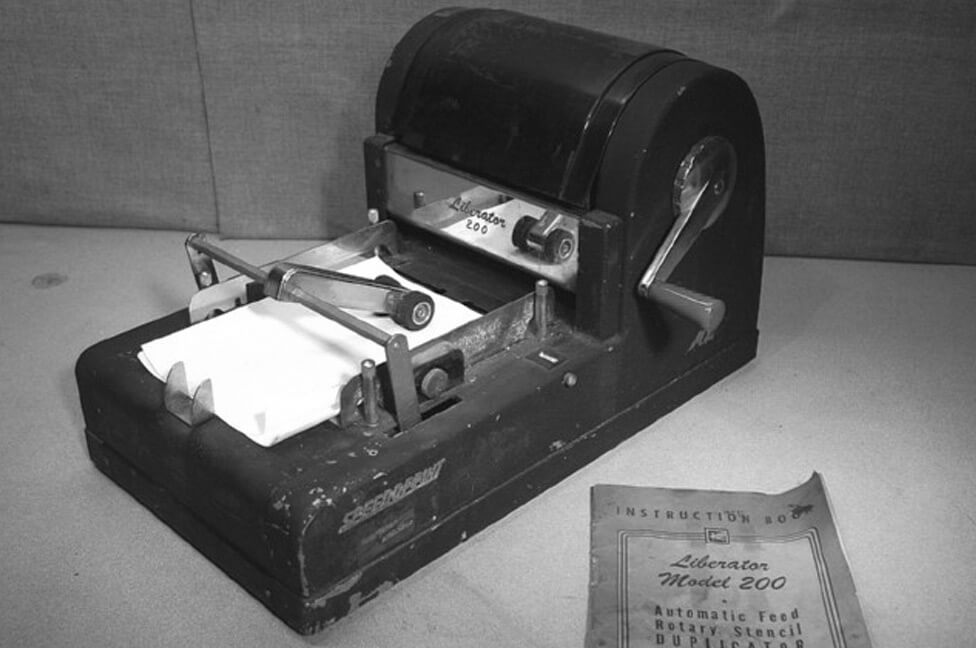
We endure through an era of remarkable change
- Paul Grambsch (pictured) is named the school's new dean.
- Office and Secretarial Management programs are discontinued.

- Evening MBA program is approved, providing accessible classes to full-time workers in the Twin Cities' diverse corporate community. The program has 800 students in its first five years.
- Professor Gary Andrew recognized that students could be served by learning experiences outside the classroom. The Field Projects placed teams of four or five students with local, participating businesses and gave them business challenges. The projects were so successful that they continued for nearly four decades, eventually to be replaced in the modern era by the Carlson Enterprise programs.
-
The first Computer Center in the business school is created. A Univac Solid-State 80 computer, worth half-million dollars, was installed for both research and instruction. Courses in computer programming and operation were offered, and faculty member Gordon Davis was named supervisor.
- Economics department transferred to College of Liberal Arts.
- School moves to Management & Economics Building (pictured, later renamed Walter Heller Hall).
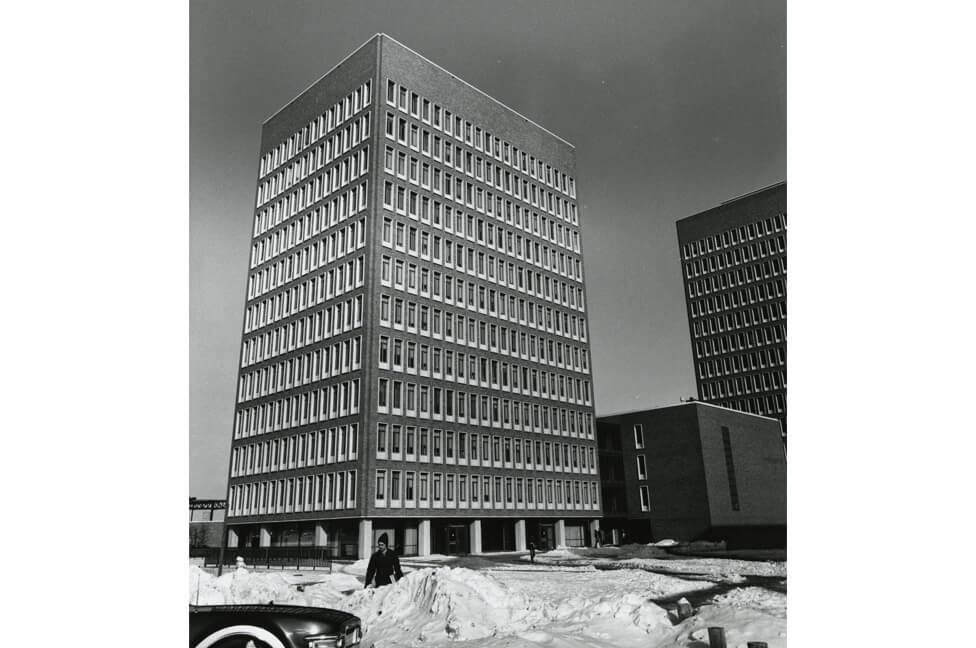
-
PhD in Industrial Relations is approved.
-
Professors Gordon Davis, Gary Dickson, and Tom Hoffmann launch the Management Information Systems (MIS) academic program with MS and PhD degrees. They also establish the Management Information Systems Research Center (MISRC). They were the first formal academic program and the first formal research center devoted to this new field, respectively.
-
The 1960s was a time of wage growth—and tuition increases. The average undergraduate starting salary jumped from $4,320 in 1960 to $8,304 in 1969. Tuition also rose during that time span—from $71 per quarter to $141.
We set the stage for a prosperous future
-
Minnesota Executive Program is launched, offering leaders of small- and mid-sized firms access to advanced courses in management, strategy, and other organizational issues taught by the U's top business faculty.
- James Don Edwards is named dean, but ends up staying on only a year. He explains that he's "disillusioned" by the University's unwillingness to fund the business school's priorities.
- The School of Business Administration is renamed the College of Business Administration.
-
C. Arthur Williams, a committed instructor and previous interim dean, is named the school's permanent dean. He pledges to work closely with the University and the business community.
-
Wheelock Whitney, a Minnesota business and political leader, began teaching a popular class at the school called "Top Management Perspectives," which would continue for the next dozen years.
-
During the ’70s, the College of Business Administration saw an increase in the number of women enrolled. In 1964, women made up just 3% of the school's undergraduate students. Ten years later, they made up 16%.
- Accounting Research Center founded.
- Business Association of Minorities established.
-
Management Information Systems Quarterly journal is launched
- Master of Business Taxation program is established.
- David Lilly, a former CEO of the Bloomington, Minn., based Toro Corporation, is named dean, bringing new energy and a huge list of connections to Twin Cities companies. He grows outside contributions to the school from just over $12,000 a year to more than $4 million.
- Tony Dungy, a Gopher quarterback, graduates. He would go on to have a successful coaching career with the Indianapolis Colts and Tampa Bay Buccaneers.
-
Carlson Board of Advisors is founded, with N. Bud Grossman serving as its first chairman.
This group of business leaders, many of whom are business school graduates, helps faculty and administrators forge new approaches to business education and make new connections in the community.
We grow our mission and our identity
-
Graduate of the School of Business Administration, Philip "Flip" Saunders, a basketball guard, becomes an assistant coach for Gopher Basketball. He would also coach a number of NBA teams, including the Minnesota Timberwolves, from the 1990s into the 2010s.
-
Edward Foster is named acting dean.
- Strategic Management Research Center created.
- Preston "Pete" Townley is named dean. He came to the office from General Mills and was instrumental in forging a lasting bond with the school's largest benefactor, Curt Carlson.
- Dean Townley helped establish the Office of International Programs, the precursor to the current Carlson Global Institute.
- Evening master's degree in industrial relations is established.
- The school's name changes to the Curtis L. Carlson School of Management, based on an $25 million gift from Curt Carlson and reflecting a broader new mission that includes management in public and nonprofit institutions.
- Finance Professor Tim Nantell named acting dean.
We break ground on a new chapter for our school
- David Kidwell is named dean. His first step is to meet with 150 local business leaders to share views on business education and strengthen the school's ties to the local community.
- Professor Mahmood Zaidi established the Carlson School's first foreign executive MBA program in Warsaw, Poland, at the Warsaw School of Economics in 1991. This was the first graduate offshore degree approved in the history of the Carlson School and the University of Minnesota overall.
- Quality Management Leadership Center is founded.
- Curt Carlson commits $10 million toward new facility for the Carlson School.
- Dean Kidwell finds additional funds for the $45 million structure from 78 corporate and individual donors.
-
A new milestone is reached:
- 3,000 students participate in degree programs.
- 10,000 in non-degree professional programs.
-
The new building breaks ground, based on contributions from 78 major donors.

-
Dean Kidwell and the Board of Advisors agreed that incoming freshmen could be admitted into the school, creating a four-year program.
-
Joseph M. Juran Center for Leadership in Quality is established. It's since become a nationwide leader in quality research.

-
The new Carlson School building opens with:
- 33 classrooms
- 35 meeting rooms
- 180-seat lecture hall
- 250-seat auditorium
The state-of-the-art facility moves the school's programs from five buildings to one.
-
Carlson Growth Fund is established — this small-cap growth fund is managed by students in the Carlson Funds Enterprise.
-
Curt Carlson passes away at the age of 84.
New facilities, new leadership, new century
-
Lawrence Benveniste is named dean and spells out a vision for offering experiential business learning opportunities.
-
Carlson Consulting Enterprise launches, providing consulting services to clients with MBA students coached by seasoned consultants. Many students place at major consulting firms.
-
Carlson Brand Enterprise launches, focused on the primary career paths MBA earners pursue. Students in the program play a pivotal role in the relaunch of the Radisson Seven Seas cruise line.
- Herbert Hanson, Jr., '49 BA, donates $10 million for a new undergraduate classroom facility.
- First classes in the China Executive MBA program graduate.
- First Women’s Leadership Conference.

- Ground was broken on Hanson Hall.
- Medical Industry Leadership Institute, Center for Integrative Leadership, and Master of Accountancy are launched.
- Center for Entrepreneurial Studies renamed Gary S. Holmes Center for Entrepreneurship.
- Alison Davis-Blake (pictured) becomes first female dean of the Carlson School.
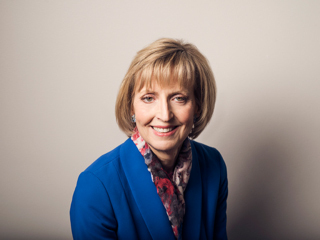
- Carlson School is named Educational Partner of the Year by the National Black MBA Association’s Twin Cities chapter.
- New major in Public Nonprofit Administration is established.
- The grand opening of Hanson Hall, a 132,000 square foot, four-story facility featuring collaborative learning spaces, a recruiter-meeting lounge, and private offices
- New undergraduate curriculum is launched with core courses in business management and international experience.
- Business Week celebrates its 50th year.
- Gopher Business is established.
We celebrate 100 years of serious business
- The Office of International Program is renamed the Carlson Global Institute in honor of Curt Carlson to recognize the global reach of the Carlson Companies.
- Gophers of the Last Decade (GOLD) is established.
- Sri Zaheer (pictured), who joined Carlson School as a professor in 1991, is named dean.
- The Military Veterans Initiative is launched, raising millions of dollars of MBA scholarships to help veterans transition to business careers.
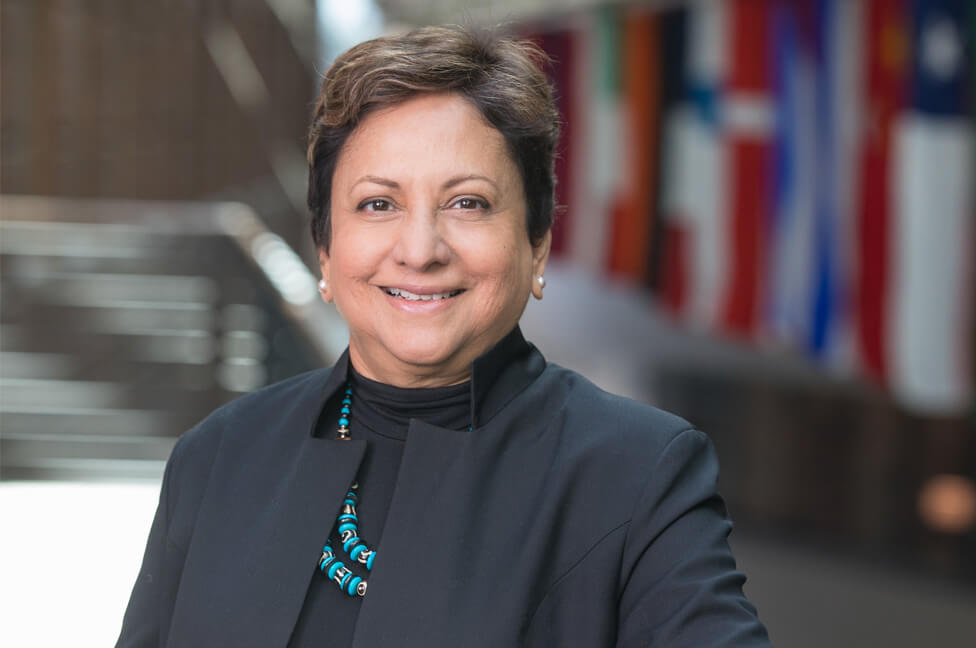
-
The Carlson School Mentorship Program celebrates its 20th anniversary. In its first 20 years, the program connected more than 2,000 mentors and mentees to share business insights and experiences.
- Land O'Lakes pledges $2.5 million to establish the endowed Land O'Lakes Chair in Marketing.
- Master of Science in Business Analytics launched.
- Women Mean Business, a weeklong business challenge that empowers young women, launches.
- Gopher Gratitude, an event in which Carlson School students and faculty thank donors for their contributions to Carlson School, launches.
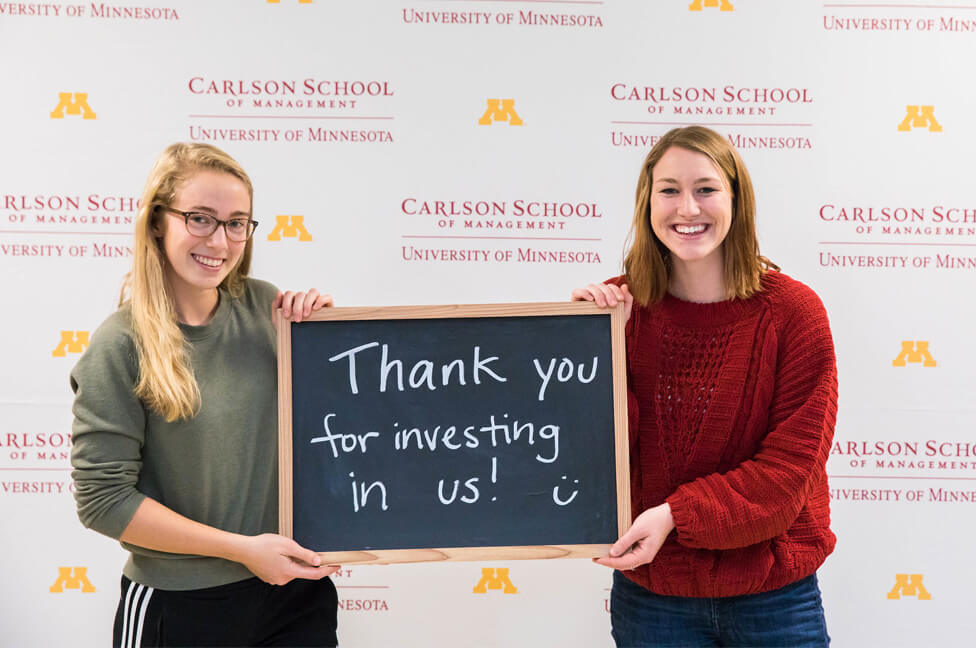
- The school launches new programs including the Industry MBA, MS in Supply Chain Management, and MS in Finance.
- Included among the new programs is a dual degree MBA, paired with the College of Food, Agricultural and Natural Resource Sciences' Applied Economics master's program.
-
We celebrated 100 years of imagination, engagement, and ambition and brought together the Carlson School community from all over the world.
We Look Forward Toward the Future
- The school faces unprecedented challenges during the COVID-19 pandemic and in the aftermath of George Floyd's murder.
-
Jamie Prenkert becomes the 13th dean of the Carlson School.